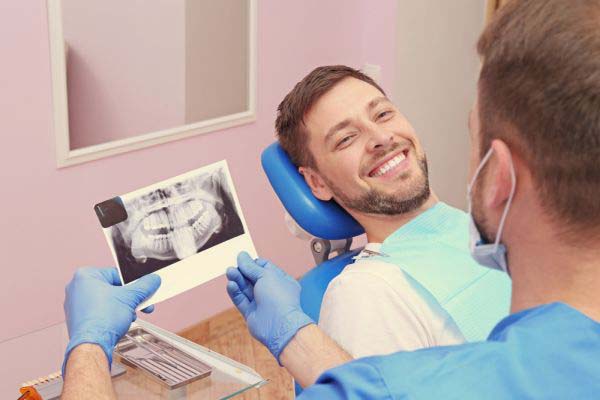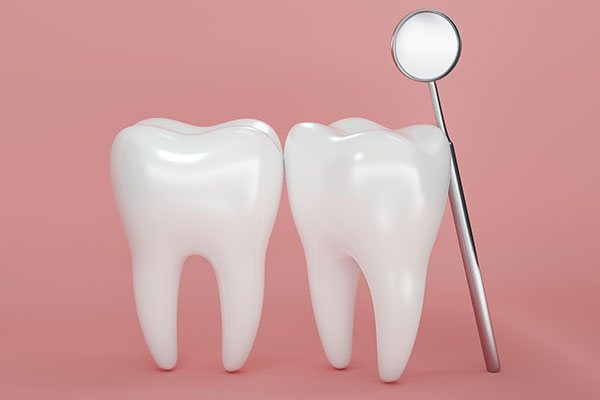What Happens at an Oral Exam at Your Dentist Office?

Has it been some time since you visited the dentist’s office for an oral exam? If so, you may be wondering what the process entails. The following will help you prepare for your visit and alleviate any anxiety you may be feeling.
The oral exam process
While all dentists differ in some ways, most will follow the same steps during an oral exam. This helps to identify any concerns and ensure the health of your teeth. Here is what happens during an oral exam with your dentist.
Medical history
Before the exam, you will be asked for a complete dental and medical history. All medications need to be disclosed as well as any chronic diseases that could affect oral health. This information will allow the dentist to focus on the areas that the chronic condition can affect. It will enable the dental team to create a better oral health care plan for you. If you are visiting a dentist you have already been to, you will likely be asked if the information you provided at the last visit is still correct or if anything has changed.
Initial exam
The dentist, or sometimes a dental hygienist, will do a brief exam to identify any problems before continuing. This is an opportunity for you to point out any pain or issues before heading into the cleaning.
X-rays
X-rays will be taken of the teeth to identify any issues and to create a baseline for future treatments. The dentist can refer to these X-rays when examining changes in the teeth and gums at following visits. X-rays help identify bone loss, abnormalities, tooth decay, gum disease, tumors and cysts.
Cleaning
If there are no immediate problems that would hinder a cleaning, the dentist or a dental hygienist will clean the teeth, gum and mouth. This prepares it for the oral exam by removing anything that can harm the teeth or obstruct the dentist’s view.
Plaque and tartar are scraped from the teeth and gum line with a scaler. Once the plaque and tartar are removed, the hygienist will polish the teeth. A gritty toothpaste and electric toothbrush are used to leave the teeth shiny and smooth. The next step is flossing followed by a fluoride treatment. The fluoride treatment is typically applied as a gel and rinsed out with water.
Final inspection
Finally, the dentist will examine the teeth for gum disease, problems with alignment, signs of grinding or other potential issues. During the final oral exam, dental work such as bridges and fillings are inspected. The dentist will check areas of the mouth and throat for signs of oral cancer.
Continue to maintain your healthy smile by following the dentist’s instructions. Brush and floss daily and avoid foods and drinks that will stain your teeth.
Are you ready for your oral exam?
It is normal to experience anxiety and discomfort when visiting the dentist for the first time or after a long gap in care. Do not let this fear stop you from taking proper care of your health. You now know what to expect and can mentally prepare yourself for the visit.
To schedule your oral exam, call our office to choose a suitable time. We are happy to explain our process to help reduce your concerns.
Are you considering an oral exam in the San Francisco area? Get more information at https://aestheticsmiles.com.
Check out what others are saying about our services on Yelp: Read our Yelp reviews.
Related Posts
Wisdom teeth cannot fit in the mouth. Four of your adult teeth are wisdom teeth. These teeth erupt after the second molars are already set in the back of the mouth. Because of this, wisdom teeth do not erupt the right way. Some of them cannot even break through the gums. If you want to…
Dentists regularly field questions about wisdom teeth from patients and young patients’ parents. If you are approaching the age when extracting these teeth is common, you may be curious as well. There are a lot of reasons why dental professionals recommend removing these molars. As you understand more about these teeth, you may realize why…
There are numerous reasons why dental professionals recommend wisdom teeth extraction, and one is to prevent teeth misalignment. Wisdom teeth are the third molars located in the lower and upper parts of the jaw, behind the other molars on both sides. The teeth generally appear years after the other permanent teeth have come up. In…
You may have many questions about wisdom teeth and whether you should ask a dentist to remove them. This third set of molars can cause problems when they begin to erupt in the back of the mouth. While not everyone needs to have surgery to have them extracted, it may be good for your oral…


